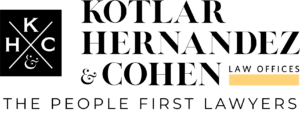Workers are susceptible to all kinds of injuries on the job. There are many steps employers can take to mitigate the risks to their employees. One interesting option is to employ a different kind of worker: robots.
When businesses invest in robots to take over some work tasks, it may alarm people that these machines are taking people’s jobs. However, it can be a huge benefit to human employees to have mechanical help when the job requires dangerous or strenuous work. Having a robot to, quite literally, do the heavy lifting can save employees from serious injuries and save employers significantly in Workers’ Compensation claims and lost productivity.
Use of robots is well suited to jobs in warehouses and factories where workers’ bodies are subjected to very physical labor. Jobs that require heavy lifting, repetitive motions, or exposure to dangerous environments are the perfect places for robots to relieve human workers of potentially dangerous tasks.
Workplace Injuries that can be Avoided with the Use of Robots
Many of the workplace injuries that cause workers to require medical attention or to miss days of work are those that can be avoided with the use of robots. Some of these are the following:
- Overexertion injuries. When a worker attempts to lift of move an object that is too heavy, they can be injured. Back injuries are a common occurrence in many workplaces that require workers to lift heavy objects as part of their job. Overexertion injuries can also happen when a person yanks or pulls a muscle in another area of the body, including the arms, shoulders, and neck as well as other parts.
- Repetitive strain injuries. Sprains or damage to muscles and soft tissues are commonly listed among workplace accidents as a result of repetitive strain injuries caused by workers continually using the same muscles to make the same motion repeatedly to do the job. Carpal tunnel syndrome is one of the most well-known types of repetitive strain injury, but this injury can affect areas other than the wrists, hands, and arms.
- Exposure injuries. People are much more sensitive than machines to environmental hazards. Although extreme heat or cold may cause malfunctions, machines are able to withstand temperatures that would be dangerous for humans. Similarly, handling noxious chemicals or being exposed to toxic fumes is much more suitable for a mechanical worker than a flesh-and-blood employee.
- Injuries caused by worker fatigue. Too many workplace injuries occur because workers who are motivated by productivity quotas ignore their body’s need for rest to continue working. When workers push themselves in this way, accidents become more likely.
How can Investment in Robots Help Employers Protect Their Workers?
Employers that identify a troubling recurrence of the overexertion injuries might decide to investigate autonomous mobile robots (AMRs), which are able to assist workers with strenuous tasks such as lifting heavy objects. The machines can retrieve objects from high shelf without risking a fall, unlike the way reaching from a ladder or scaffold might endanger a person. These machines can also transport heavy or hazardous products without worry of causing strain or dangerous exposure.
When working with hazardous materials or in extreme temperatures, robots are much more suitable for the work than humans. Machines can withstand heat and cold in ways that a person just could not handle. Other environmental threats to humans, such as simple trip and fall hazards, are also not an issue for machines who are not similarly vulnerable to bodily injury.
How can Collaborative Robots Help Workers Avoid Repetitive Strain Injury?
Collaborative robots, known as cobots, work together with human workers to assist with delicate or repetitive tasks that would be more difficult, time-consuming, and dangerous for a human working alone.
Help from a cobot can allow workers to maintain an ergonomically correct position while they work, saving their muscles and joints from overcompensating and risking injury.
Smart workstations can help workers avoid fatigue as well, since the machine will take over the most painstaking tasks while the human is involved in the execution of more sophisticated skills that require decision making or complex thought. This arrangement also allows workers to hand off the timewasting tasks to focus on more efficient ways to operate. Workers who previously were bogged down with laborious tasks become able to focus on acquiring new skills, which benefits the worker and the company.
How Does Automation Protect Workers While Also Increasing Productivity?
Robots never get tired or sick, Machines never get lost in thought and become unfocused. Unlike humans, AMRs never need to take breaks.
A major factor in many work accidents is fatigue. People get hurt when they work straight through without adequate rest. Jobs that require workers to handle dangerous tasks become even more problematic when workers are pushed to the limits and become overworked and their focus on safety wanes.
Accidents from worker fatigue are preventable. The solution is as simple as making sure workers have time to rest and reset.
Studies have shown that workers are at great risk when they fail to take breaks often enough, or when the breaks they take are not long enough. Fatigue-related work accidents are also disproportionately associated with night shifts and shifts longer than 11 hours.
Robots, by contrast, can work continuously without any decline in performance or any increase in hazardous fatigue.
When robots take over some job tasks, it can free up the worker to get the rest they need to stay sharp, and safe, on the job.
Cherry Hill Workers’ Compensation Lawyers at Kotlar, Hernandez & Cohen, LLC Help Injured Workers after a Job-Related Injury
If you were hurt at work in an accident, you should be able to collect Workers’ Compensation benefits to pay for the costs of your medical bills as well as any lost wages you may have suffered because of the incident. The Cherry Hill Workers’ Compensation lawyers at Kotlar, Hernandez & Cohen, LLC can help you understand your rights, challenge any denial of benefits, uncover proof of your claim, and secure the compensation you deserve. Call us at 856-751-7676 or contact us online for a free consultation. Our offices are in Mount Laurel, Cherry Hill, Trenton, and Vineland, New Jersey; and Trevose, Pennsylvania. We serve clients throughout New Jersey and Pennsylvania.


